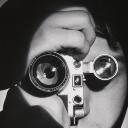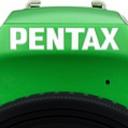Yahoo Answers is shutting down on May 4th, 2021 (Eastern Time) and beginning April 20th, 2021 (Eastern Time) the Yahoo Answers website will be in read-only mode. There will be no changes to other Yahoo properties or services, or your Yahoo account. You can find more information about the Yahoo Answers shutdown and how to download your data on this help page.
Trending News
I would like an AFFORDABLE long range Lense for my Sony mirrorless Camera & a wide angle lense as well. Where can I find them cheap?
I own to Sony Mirrorless Cameras. They are the Sony OX 6000 & the Sony OX 6400. I prefer Autofocus Lenses but if I can't stay under $300 oer lense, I am willing to do manual focus, or used lenses. I'm also open to other ideas. I want the type of lense that the photographers use at basketball games. That is why I need Auto Focus to make tracking the action easier. But for the Wide Lense, I don't necessarily need autofocus. I am also interested in a Macro Lense. Don't want to spend $1100 on 1 lense when I have 3 lenses to buy. And I am not certain what ND Filters are right for my camera. (Thanks for your help in advance).

2 Answers
- SumiLv 72 months agoFavorite Answer
Best places to buy camera gear is either adorma.com or bhphotovideo.com. I'd avoid amazon since they don't have the filtering options to reduce search results like adorma or b&h do. Prices will be the same if not the lowest at these two stores. Plus, since they're real camera shops, you can call them and speak with a live knowledgeable person. Try that at amazon.
Your budget will not allow you to get the best or even the preferred type of lens that you need for basketball. I've shot many basketball games on the collegiate level and a few at NBA stadiums. There's no way you can get acceptable results without an f/2.8 lens (or better). So just as long as you're willing to make some compromises, you can get a lens that will be good enough to start shooting basketball games.
The preferred lens for BB is a 70-200 f/2.8, but that's going to cost at least $800 new, and then you'll need a lens adapter. The pro photographers at BB games are also using high-powered strobes located in the rafters at these NBA stadiums. They could use available light, but that would mean shooting at ISO 3,200. The strobes allow them to stop the action at an ISO of just 400.
Keep in mind that the bodies you list are not designed for sports/fast action. To make matters worse, when you adapt non-native (i.e. Sony brand) lenses, the AF performance takes a nosedive. Although, from what I've read, of all non-Sony lenses, Canon's lenses have the best AF performance. Even if you get the $2,400 Sony G Master 70-200 f/2.8, you are still going to have to accept getting shots out of focus during situations where the action is moving towards/away from the camera. AF performance is a product of the body & the lens, so the 6400 will have better continuous AF performance than the 6000. You will eventually want/need to upgrade to a sports camera like the Sony A9.
You're going to have to compromise somewhere in order to get glass within your budget. Instead of a 70-200 f/2.8, take a look at a 50mm f/1.4 which will run around $400 new and used for about 1/2 that. A 50mm f/1.8 is often about $135 new, and about $50 used, but they do not focus as fast, and they're significantly less sharp than the f/1.4 versions. The benefit here is using a fast lens which will keep your ISO settings below 3,200, but with the compromise of not having the ability to zoom. At f/2.8, you will need to be at ISO 3,200 in order to get the shutter speeds required for BB. A 50mm f/1.4 is 1.5 stops brighter, therefore your ISO will be just below 1,600 making for a clearer, sharper image with better color and contrast.
WIDE ANGLE:
Landscapes require wide lenses. A 28mm (18mm in APS-C) is going to be okay to start off with, but a 24mm (15mm in APS-C) will be much better. Four millimeters doesn't sound like it would be such a big deal, but realize that's a 15% increase in angle of view. Fortunately, we're in a digital world, and you can always shoot multiple frames and combine them in post to make one super-wide shot. That's what I often need to do since my widest lens is equivalent to a 28mm in full-frame format.
Go with the widest lens you can afford while avoiding a fish eye. Fish eye lenses are simply not corrected for various wide-angle distortions, so vertical/horizontal lines are greatly curved. Canon, for example, has a 15mm fish eye, but their 14mm is not a fish eye because it's corrected. While they're fun lenses, the look of a fish eye gets old fast. I would recommend that if you can afford it, go with an ultra-wide zoom like a 10-20mm. But if you go with a manual focus prime, then a focal length around 10-12mm would be my pick. Just keep your camera's crop factor in mind when buying full-frame lenses. No wide-angle lenses like these are going to be perfectly corrected for distortion, but they're all close enough where you can remove distortion in post.
MACRO:
There are a few ways of getting a good macro setup. The best, and most expensive, is getting a true 1:1 macro lens. The term "1:1" simply means that the size of the image projected onto the sensor is life-size. A common feature of most zooms is to have a macro feature, but this only renders images at a 1:4 or 1/4 life-size.
True 1:1 macro lenses come in various focal lengths ranging from about 50-180mm. The only difference between them is how far away you can be from your subject while being able to photograph the same area. Therefore, for those shooting bugs, for example, they're going to want to use a 100-180mm macro so that they can be further away and less likely to scare off the bugs. Short macros like a 50mm are fine, but you'll be much closer where casting your likely to cast shadows or find it more difficult to use reflectors or off-camera flashes. These short macros are great for copying photos and small things like that, but are not desirable for field work.
A 100mm is highly popular because it also doubles as a great portrait lens, but at about $700, it's often not a lens most will consider.
Depending upon the subject matter for your macro shots, a short focal length could be perfectly fine. Take, for example, Mitakon Zhongyi 20mm f/2 4.5x Super Macro Lens for Sony E. It gives you 4.5x lifesize and it's under $200. For inanimate objects like snowflakes, it's perfectly fine.
Lastly, to get macro, you can get a cheap extention tube which is just a metal tube without any elements. If fits between the body and lens giving you the abilty to get in very close. At about $100 for those that retain AF and control over the aperture, it's a cheap way of getting macro shots. Just use it with a telephoto lens and not wide ones.
Opticallimits.com is a good source for lens reviews.
- keerokLv 72 months ago
This is the cheapest telephoto you can get that's barely decent for shooting basketball games at courtside. One thing nice with this is that it's just around 5" in length so I imagine you can use this handheld given good lighting.
https://www.bhphotovideo.com/c/product/1582345-REG...
Here is a manual focus wide angle lens.
https://www.bhphotovideo.com/c/product/1450505-REG...
This macro lens is also manual focus but it has a 1:1 reproduction ratio making it a true macro lens. Minimum focusing distance is 10".




